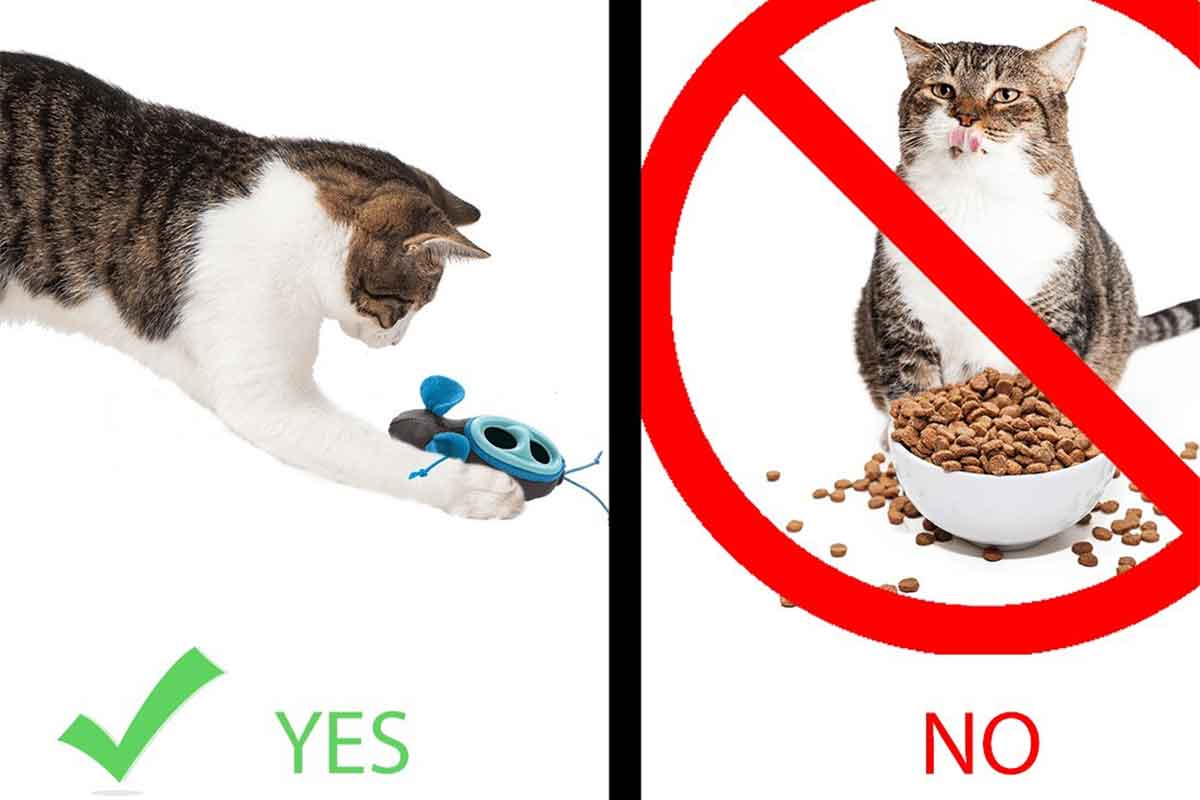Inside your housecat is the heart of a hunter. Nature made cats that way. For a cat, hunting for food is normal.
When you provide your cat with an outlet to fulfill that natural instinct, he will be happier and healthier, both mentally and physically. Cats who lack an outlet for this normal behavior may redirect pent-up energy toward less desirable behaviors.
There’s a conflict, then, between allowing cats to meet their normal and instinctive desire to hunt and keeping them indoors to protect them from diseases, predators, fights with other cats, encounters with rabid animals, and run-ins with manmade hazards such as cars.
By bringing cats indoors to live, we’ve increased their lifespan dramatically—from 1 to 5 years to 12 to 20 years. That’s huge! In addition, it’s safer for neighborhood wildlife such as songbirds. The downside is that in the process we deny them their very reason for being: hunting.
I’m passionate about this, because when you understand how important hunting is to cats, you realize that removing the possibility for them to hunt causes lots of problems. Not every cat expresses this loss, but make no mistake: your cat—even if he has spent his entire life indoors—misses it.
With some cats, this loss is obvious. You may see outwardly destructive behavior such as excessive clawing of furniture, overgrooming, “scarf and barf,” or urinating outside the litter box. Less expressive cats may withdraw from their environment or sleep all day.
In the wild, cats catch between five and 13 small prey a day, depending on luck and hunting prowess. In fact, they spend 60 to 80 percent of their waking hours hunting for prey. These meals are typically the edible contents of a bird or mouse, or one to two tablespoons per “meal.” This ingrained behavior is why many people say their cats want to eat several times throughout the day and night.
The natural cycle of an outdoor cat’s day is hunting, eating, grooming, and then resting, a cycle that’s repeated throughout the day and night. We change this natural activity when we bring cats indoors and feed them from a bowl. We remove their natural state of being. It stands to reason that this causes problems.
Make no mistake. I am not advocating putting your cat back outside. I am in complete agreement with the AAFP (American Association Feline Practitioners) recommendation that suburban and urban cats live indoors only. But we must recognize that indoor cats still have the instinctive need to hunt.
Cats just wanna have fun! They can fulfill their natural desire to hunt and get mental and physical exercise by hunting, catching, and playing with at least five small meals a day–and I don’t mean meals from a bowl. It is possible to accomplish this in a safe, easy, and clean way in our homes. Ditch the bowl and let your cat hunt.
Simply divide your cat’s dry food and treats into at least five portions, and use indoor hunting feeders to hide them around the house. Indoor hunting feeders are containers that cats need to play with to cause them to dispense food. Now your cat gets to hunt, catch, and play with at least five small meals a day–just like nature intended. If you are feeding mostly wet food, you can portion it into smaller meals and hide these meals around the house too!
Beyond food, cats have natural ways that they like to drink (and play with) water. Clean, fresh water is essential for a cat’s health and hydration, and running water is often their favorite way to get it.
How many of you have cats who enjoy drinking from a dripping faucet or have learned to turn on the tap themselves? To encourage your cat’s water intake, you can get a continuous-flow fountain for him or leave a faucet dripping. Place water dishes in multiple locations in your home. Cats have some pretty unique preferences about where they want their water. Cats prefer to drink in a different location from where they eat. In fact, cats will drink more water if their water is in a separate location from their food.
Finally, please keep food and water away from litter boxes. No cat wants to eat and drink in the same place he uses the toilet!
This article was reviewed/edited by board-certified veterinary behaviorist Dr. Kenneth Martin and/or veterinary technician specialist in behavior Debbie Martin, LVT








